This article needs additional citations for verification .(May 2018) |
Icer Air, stylized as ICER AIR, was an urban big-air ski and snowboard event held in 2005 on Fillmore Street in San Francisco and at or near AT&T Park from 2006 through 2008.
This article needs additional citations for verification .(May 2018) |
Icer Air, stylized as ICER AIR, was an urban big-air ski and snowboard event held in 2005 on Fillmore Street in San Francisco and at or near AT&T Park from 2006 through 2008.
ICER founders Glen Griffin originally created the Icer Air event with Olympic gold medalist Jonny Moseley to promote ICER, a sports products company that developed a new type of aerosol spray-on ski and snowboard wax.
The first event was originally scheduled for August 2005, but was delayed after neighborhood opposition. After the city granted the necessary permit, [1] on September 29, 2005, over 15,000 people showed up to watch the event, for which several tons of snow were applied to the steep blocks of Fillmore Street between Broadway and Green. [2] [3]
The event was moved across town in 2006 to AT&T Park, home of the San Francisco Giants, creating the first stadium big-air ski and snowboard contest to be held in the United States. With the financial backing of Esurance, Icer Air was held annually and expanded to include more events through 2008, [4] after which the sponsor backed out and the event was no longer held.
A 110-foot (34 m) tall, 60-foot (18 m) wide, 350-foot (110 m) long scaffold jump took five days to build, and was covered with 200 tons of man-made snow. Icer Air featured BMX, skate, and wakeboard competitions, as well as bands such as Jurassic 5, Ladytron, Mos Def, and Talib Kweli. The ICER AIR event drew over 25,000 people and generated over 450 million media impressions annually. Athletes participating included skaters Tony Hawk and Pierre-Luc Gagnon, Olympic and X Games gold medal snowboarders Travis Rice and Danny Kass, and X Games gold medal skiers Jon Olsson and Simon Dumont.
A scandal arose in 2008 when athletes and others did not receive promised fees and reimbursements for appearing. [5] The event was forced to downsize then shut down completely after losing its main sponsorship funding during the 2008 financial crisis.
Winners: C.R. Johnson - ski, J.J. Thomas - snowboard
Winners: T.J. Schiller - ski, Travis Rice - snowboard
Winners: Jon Olsson - ski, Travis Rice - snowboard
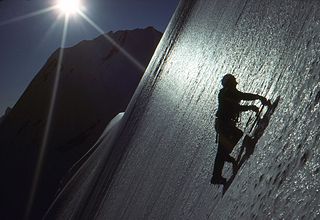
Action sports, adventure sports or extreme sports are activities perceived as involving a high degree of risk. These activities often involve speed, height, a high level of physical exertion and highly specialized gear. Extreme tourism overlaps with extreme sport. The two share the same main attraction, "adrenaline rush" caused by an element of risk, and differ mostly in the degree of engagement and professionalism.

The Winter Olympic Games is a major international multi-sport event held once every four years for sports practiced on snow and ice. The first Winter Olympic Games, the 1924 Winter Olympics, were held in Chamonix, France. The modern Olympic Games were inspired by the ancient Olympic Games, which were held in Olympia, Greece, from 776 BC to 394 AD. The Baron Pierre de Coubertin of France founded the International Olympic Committee (IOC) 1,500 years later in 1894, leading to the first modern Summer Olympic Games in Athens, Greece in 1896. The IOC is the governing body of the Olympic Movement, with the Olympic Charter defining its structure and authority. The original five Winter Olympic Sports were bobsleigh, curling, ice hockey, Nordic skiing, and skating. The Games were held every four years from 1924 to 1936, interrupted in 1940 and 1944 by World War II, and resumed in 1948. Until 1992, the Summer Olympic Games and the Winter Olympic Games were held in the same year. A decision to change this was made in 1986, when during the 91st International Olympic Committee session, IOC members decided to alternate the Summer Olympic Games and the Winter Olympic Games on separate four-year cycles in even-numbered years. Also, at that same congress it was decided that 1992 Winter Olympics would be the last to be held in the same year as the Summer Games and that to change the rotation, the edition that would be held in 1996 would be brought forward by two years, being scheduled to 1994. After this edition, the next one was to be held in 1998 when the 4-year Olympic Cycle resumed.

Winter sports or winter activities are competitive sports or non-competitive recreational activities which are played on snow or ice. Most are variations of skiing, ice skating and sledding. Traditionally, such games were only played in cold areas during winter, but artificial snow and artificial ice allow more flexibility. Playing areas and fields consist of either snow or ice.

Snowboarding is a recreational and competitive activity that involves descending a snow-covered surface while standing on a snowboard that is almost always attached to a rider's feet. It features in the Winter Olympic Games and Winter Paralympic Games.

The 2006 Winter Olympics, officially the XX Olympic Winter Games and also known as Torino 2006, were a winter multi-sport event held from 10 to 26 February in Turin, Italy. This marked the second time Italy had hosted the Winter Olympics, the first being in 1956 in Cortina d'Ampezzo; Italy had also hosted the Summer Olympics in 1960 in Rome.
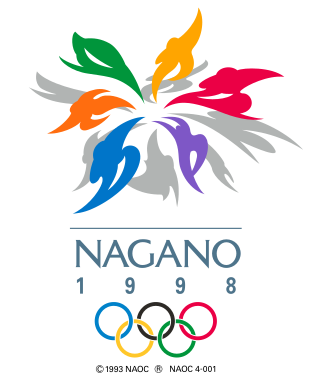
The 1998 Winter Olympics, officially known as the XVIII Olympic Winter Games and commonly known as Nagano 1998, was a winter multi-sport event held from 7 to 22 February 1998, mainly in Nagano, Nagano Prefecture, Japan, with some events taking place in the nearby mountain communities of Hakuba, Karuizawa, Nozawa Onsen, and Yamanouchi. The city of Nagano had previously been a candidate to host the 1940 Winter Olympics, as well as the 1972 Winter Olympics, but had been eliminated at the national level by Sapporo on both occasions.

The X Games are a series of action sports events founded by ESPN Inc. which air on the ESPN family of networks including ABC. The events are mainly held in the United States, with disciplines such as skateboarding, BMX, motocross, skiing and snowboarding. Participants compete to win bronze, silver, and gold medals, as well as prize money. Concurrent with competition is the "X Fest" sports and music festival, which offers live music, athlete autograph sessions, and interactive elements.

Canada Olympic Park (COP), formerly known as Paskapoo Ski Hill, is a ski hill and multi-purpose training and competition facility located in Calgary, Alberta, Canada, owned and operated by WinSport. It is currently used both for high performance athletic training and for recreational purposes by the general public. Canada Olympic Park was one of the venues for the 1988 Winter Olympics, being the primary venue for ski jumping, bobsleigh, and luge.
The Gravity Games was a multi-sport competition originating in Providence, Rhode Island that was broken down into Winter and Summer adaptations. The competition featured a variety of extreme sports such as aggressive inline skating, skateboarding, freestyle motocross, BMX freestyle and snowboarding.

Australia first competed in the Winter Olympic Games in 1936 in Garmisch-Partenkirchen, and has participated in every games since, with the exception of the 1948 Games in St. Moritz.
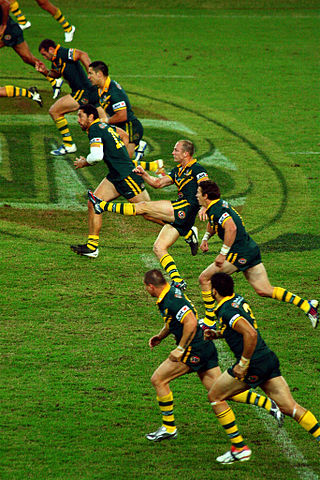
Winter Sports in Australia encompasses a great variety of activities across the continent of Australia, including winter sports played in snow and ice such as ice hockey. Climate varies considerably from the tropical North to temperate South in Australia, and sporting practices vary accordingly. Ice and snow sports like Skiing in Australia are conducted in the high country of the Australian Alps and Tasmanian Wilderness. Australia has relatively low mountain ranges, but a long history of participation in recreational skiing and the Winter Olympic Games. Australians have won olympic gold in ice skating, skiing and snow-boarding events. Australia's generally flat geography and usually mild winter climate otherwise provide ideal conditions for international non-snow/ice winter sports and team games like rugby union football, rugby league football, and association football (soccer), which are all popular sports during the Australian winter and in which Australia has enjoyed considerable international success. Australian rules football is a home-grown winter football code with a wide following throughout Australia. Many other sports are also played or watched in Australia through the winter season.

Travis Rice is an American professional snowboarder. He is #13 on Snowboarder magazine's list of the 20 most influential snowboarders of the last 20 years. The 41-year-old has featured in more than twenty snowboarding films. Rice's biggest claim to fame was when he arrived at Snowboarder magazine's Superpark contest at Mammoth Mountain and launched a 'mammoth' of a backside rodeo across a 117-foot gap jump. He has been considered "the Paul Revere" of the big mountain freestyle movement. In 2013, Rice was named the best contemporary snowboarder in the world by Red Bull; Rice was also hailed as one of the greatest snowboarders of all time by numerous writers and publications.
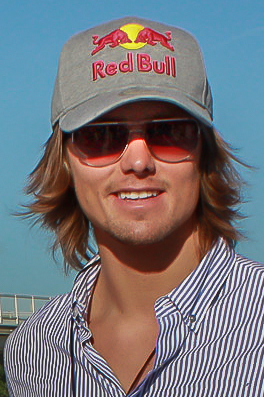
Jon Anders Olsson is a professional freeskier and alpine ski racer from Sweden. Born in Mora, Olsson started his career as a ski racer but at age 16 he switched his race skis for twin tips and quit ski racing. Eight years later, after a 50 000 SEK (US$5826.22) bet with fellow skier Jens Byggmark, Olsson started ski racing again with the goal of the bets being to make it to the Olympics in 2014. He now competes in both freestyle and ski racing. Olsson is known for his invention of several new double flips, including a D-spin 720 into a flatspin 540, a switch double rodeo 1080, a double flatspin 900, and a switch cork 720 to flatspin 540.

Torstein Horgmo is a Norwegian professional snowboarder. Horgmo has competed, and medalled in, a variety of slopestyle and big air snowboarding competitions. He rides regular stance.
The 2011 South Asian Winter Games, officially the 1st South Asian Winter Games, were held in Dehradun and Auli, in the Himalayan state of Uttarakhand, India in January 2011. The games were conducted by the Indian Olympic Association and the Winter Games Federation of India. A grand opening and closing ceremony took place on 10 January 2011 and 16 January 2011, in Dehradun and Auli, respectively.

The compactness of the venue locations for the 2018 Winter Olympics and 2018 Winter Paralympics, hosted by the county of Pyeongchang, South Korea was one of the winning arguments of the bid. The Games were gathered around two main venues: these were the mountain resort of Alpensia in Pyeongchang for the outdoor (snow) sports and the coastal city of Gangneung for the indoor (ice) sports There were also two stand-alone mountain venues.
The Dew Tour is an extreme sports circuit organized by Coalition 375 LLC, an alliance of elite action sports experts.
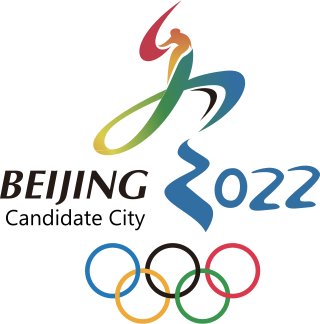
Beijing 2022 was a successful bid by Beijing, China and the Chinese Olympic Committee for the 2022 Winter Olympics. The IOC selected the host city for the 2022 Winter Olympics at the 128th IOC Session in Kuala Lumpur, Malaysia on July 31, 2015, which Beijing won.
The Beijing Olympic Games Bidding Committee unveiled the venue layout plan for the 2022 Winter Olympics on 20 February 2014; the plan was include the five ice events at the Olympic Green, the Capital Indoor Stadium and the Wukesong Sports Center, which were some of the main venues of the 2008 Summer Olympics. Competitions for luge, bobsleigh and alpine skiing were held at the Xiaohaituo Mountain Area, in a northwest of Beijing, 90 kilometres away from the city centre of Beijing and 17.5 kilometres away from the town of Yanqing. All other skiing events were held in Taizicheng Area in Chongli District, Zhangjiakou, 220 km (140 mi) from downtown Beijing and 130 km (81 mi) away from Xiaohaituo Mountain Area.